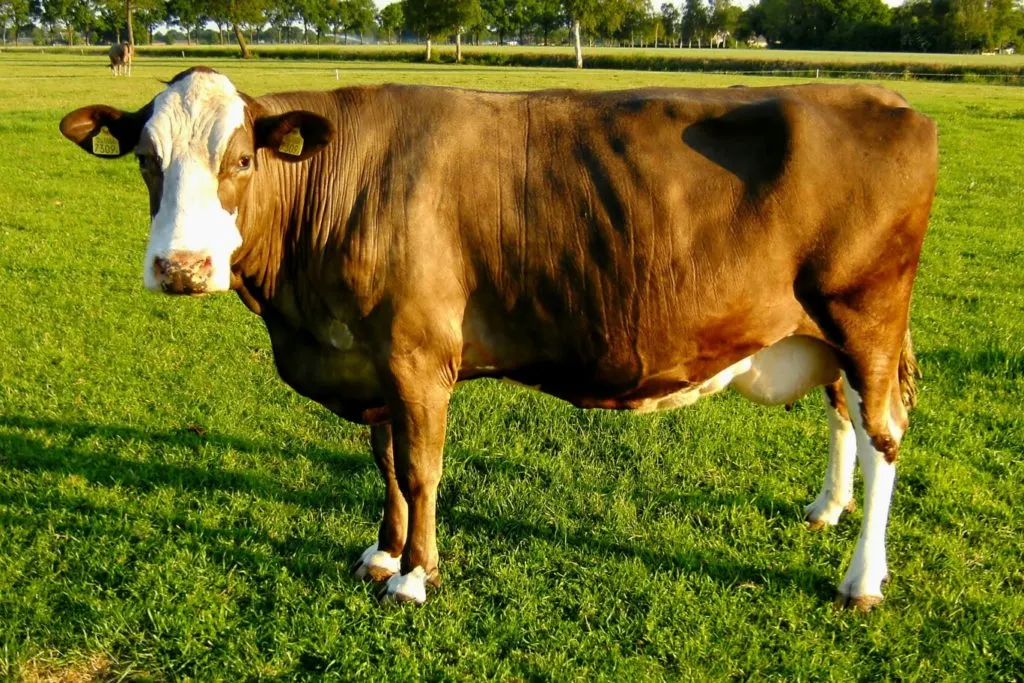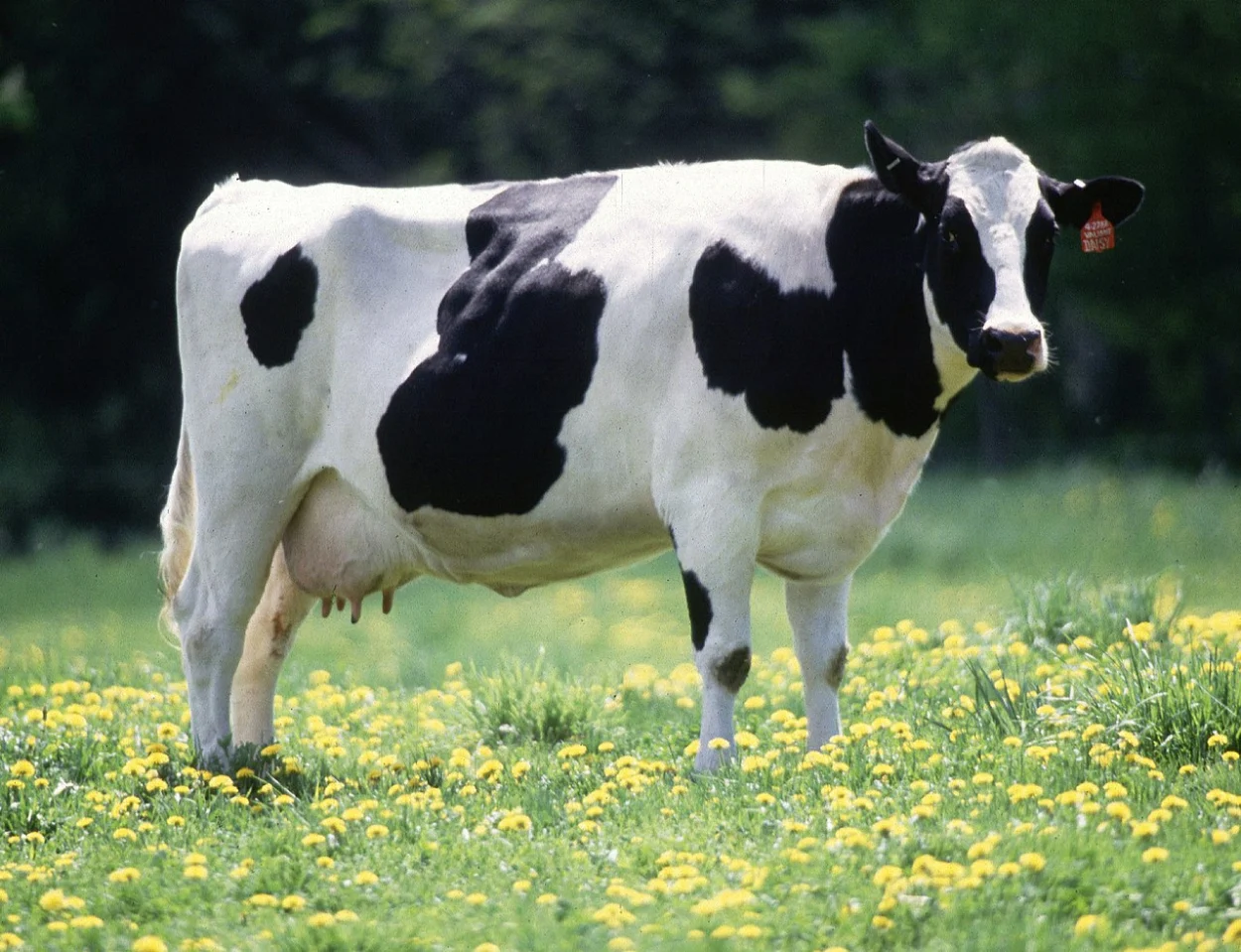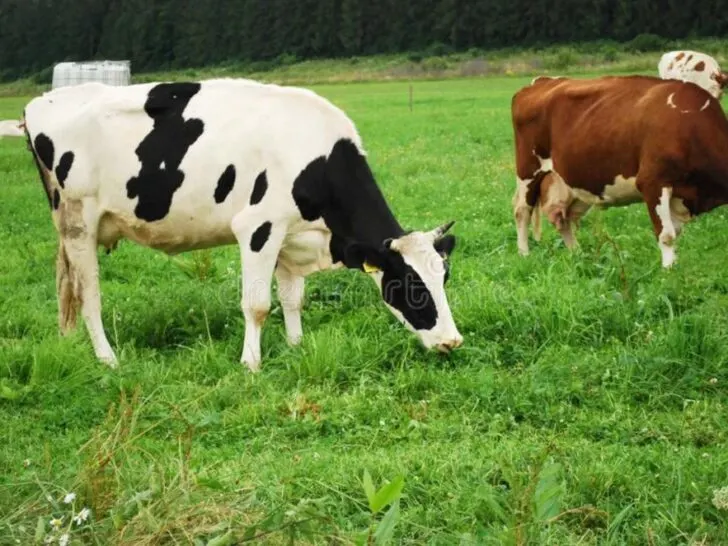Do you know what makes nature so beautiful and captivating? It’s its diversity. Humans and animals can be seen in such vast variety, with every creature being of its distinctive kind.
Brown, black, and white cows are all unique in their own way, each one of them bred for good reasons.
White cows otherwise known as the Charolais types are good milkers and meat producers, brown cows or Black Angus cows are known for their fine-quality meat while brown cows, either Brown Swiss or Jersey or other breeds are famous for high-fat milk.
In this article, we’ll take a closer look at what makes each type of cow different from the others and why it matters.
We’ll also explain why knowing these differences can be useful for anyone involved in raising cattle or using their products, such as milk and beef. So join us as we explore everything from color variations to diet requirements!
Differences Between Brown, Black & White Cows
When it comes to dairy cows, you may have seen the range of colors they come in. Brown cows, black and white cows what’s the difference?
| Feature | Brown Cows | Black Cows | White Cows |
|---|---|---|---|
| Hair Color | Brown | Black | White |
| Skin Color | Pink or Black | Black | Pink |
| Milk Production | Good | Good | Good |
| Temperament | Calm and friendly | Can be aggressive | Calm and friendly |
| Sunlight Tolerance | Low | High | High |
| Heat Tolerance | High | Low | High |
| Feed Efficiency | Medium | High | Low |
| Health | Susceptible to parasites | Susceptible to disease | Susceptible to disease |
Breed
The main difference between brown, black, and white cows is their breed.
White, black, or brown cows can be of different breeds but I’ll be talking about the famous breed types that are known to be white, black, or brown in color.
The famous brown cows are Brown Swiss and Jerseys, which generally produce less milk but are known for their high-fat and protein-rich milk and meat.
White cows can be found in nine different breed types, all of them being major meat producers but some breeds like Charolais and British White can be used for dual purposes.
Black cows are also available in different breeds but Black Angus is known to be the most famous one. Generally, all black cows are excellent meat producers, while some are better milk producers.
Black and White cows are crossbred to produce Holestian cows (white and black body mix) which are the most famous dairy cattle in the world!
Skin Color
The second major difference is their skin colors, justified by their common names.
Brown cows characteristically have an all-black nose, black hooves, and a distinctive white spot or “star” on their head.
They also have two distinct patterns of black on white: either patches of black on a light background or roan (light patches on a dark background).
Black and white cows usually have either an all-black or all-white head with some spotting on the body.
Their coats can be any combination of black, brown, and white either a single color or more than one! The most common color pattern is “red and white,” followed by “roan” (two shades of red) and “black and white.”
Physical Characteristics Of Different Cow Breeds
Not all cows are created equal! Different breeds of cows come in a variety of colors and shapes, so let’s take a look at what makes them different.
The two main categories of cows are:
- Brown Cows – Brown cows have long and slightly wavy coats with a variety of colors, these can be brown, black and white, or spotted. Their heads are large, protruding, and often covered in curls.
- Black and White Cows – Black and white cows have sleek fur with colors broken up into clearly defined patches. Their head is small and their muzzle is usually white.
Unlike brown cows, black and white cows usually have an angular face with sharp edges. They also tend to be much slimmer than the thick-bodied brown cow.
However, all three breeds share a common trait: they naturally have horns that curve back from the top center of their heads.
No matter what color or breed you’re looking at, you can count on that one thing being true for all types of cows!
Milking Capabilities Of Brown, Black & White Cows
When it comes to milking capabilities, there are distinct differences between brown, black, and white cows. Here’s the nitty-gritty of the facts:
Brown cows

Brown cows are among the most common type of dairy cows. They produce more milk than their black or white counterparts and typically have a longer lactation period (the period in which a cow produces milk after giving birth).
Brown cows also tend to be more efficient at converting feed into milk, so they’ll produce more with less feed.
Black And White cows
Compared to brown cows, pure black and white cattle typically have a shorter lactation period and lower production levels of milk.
That being said, these animals are still capable of producing great-tasting milk and high yields when managed correctly up to 5000 liters per lactation!
Since their needs for space and feed are comparatively low, black and white cows can be raised with fewer resources than brown cows.

Health Considerations With Brown, Black & White Breeds
When deciding what type of cow to look into, you should also consider the health of each breed. Between brown, black, and white cows, some are more likely to have certain health issues than others.
Brown Cows
Brown cows tend to be tough and have fewer health concerns than both black and white breeds.
They are able to adapt well to a variety of climates, which makes them suitable for many types of farms. Additionally, brown cows tend to have strong hooves that are not as prone to cracking.
Black & White Cows
Black and white cows may be slightly less hardy than their brown counterparts, but their hybrid vigor compensates for their lack of durability.
This means that cross-breeding two different bovine species will result in improved fertility rates and greater resistance to disease, something many farmers find desirable.
They may need slightly more maintenance than brown cows due to their higher susceptibility to hoof problems, so you should be mindful of this when considering breeding a black or white cow.
Nutritional Requirements And Preferences For Cow Breeds
If you want to maximize the production of your cows, it’s important to understand their nutrient requirements and preferences.
Different breeds, such as brown and black, and white cows, have different nutritional needs and likes.
Brown Cows
Brown cows are known for their specialized diet.
They require higher levels of calcium and protein than other cows and prefer to eat grasses rather than hay or grain. This helps them gain weight quickly and stay healthy.
Black & White Cows
Black and white cows must also have plenty of calcium in their diet but they are less picky eaters than browns, so they can live off hay or grain too.
They typically do better when provided with a mix of both so that they get the right nutritional balance.
It’s important to note that both types of cows will benefit from some mineral supplements in addition to their regular diet in order to meet their nutritional needs.
This is especially true if you’re raising them for the production of cow milk, you should also add mineral supplements to their diet to make them a suitable fit for human consumption later.
Pros and Cons Of Keeping Brown, Black, And White Cows
When it comes to cows, you might be wondering what the differences are between brown, black, and white cows, and how they each fit into your dairy farm.
Brown Cows
At first glance, brown cows may be mistaken for their black or white counterparts but they do have quite a few distinct characteristics that make them stand out.
Brown cows are the most popular breed of cow in the United States, they are known for the high-fat content of the milk they produce.
This milk can be used to make many dairy products such as butter, cheese, and ice cream. Moreover, their meat makes the best barbeque steak!
Brown cows also tend to live longer than other breeds, making them a good long-term investment for any farm.
On the other hand, brown cows require more space than other breeds due to their larger size and can sometimes be more prone to injuries due to their darker coloration.
Black Cows
Black cows come in many different shapes and sizes but are typically smaller than brown cows.
They are known for being hardy creatures able to withstand difficult conditions and can handle colder weather better than most breeds.
On the downside, black cows may require more specialized feed due to their reduced size and produce slightly less milk than their brown counterparts (usually 5-10% less).
White Cows
White cows are known for being gentle giants with a docile nature that is generally easier on humans that come in contact with them as well as other animals on the farm.
They produce ample amounts of milk (similar to brown cows) while remaining fairly low maintenance compared to some other breeds.
The main drawback of white cows is that they require extra care against sunburns due to their lighter coloration leading some farmers not to want this breed of a cow on their property at all.
This takes us to conclude that all three cows have their own perks and drawbacks, cross-breeding between different types can be a helpful method to produce variety in cattle farms.
FAQs
What are the different breed names of brown, black, and white cows?
Brown cows are usually breeds such as Jersey or Brown Swiss, black cows are usually Angus or Hereford breeds, and white cows can be Charolais and British White.
All three of these colors can be found in many different types of cattle. Generally speaking, each breed has its own unique traits that make them better suited for different farming tasks, so it really depends on what your needs are as a farmer.
Are there other colors of cattle?
Yes! Cattle can also be red, gray, yellow, or even multi-colored. Again, these will vary between breeds and it is important to select the right breed that best suits your individual needs.
Do color patterns mean anything in terms of the cow’s health or quality?
No. The color pattern of a cow does not necessarily indicate anything about its health or quality.
However there may be certain breed-specific traits that may indirectly affect its health and/or quality – for example, some breeds may have better feed conversion rates than others.
Conclusion
- Understanding the difference between brown, black, and white cows can help us better appreciate the diversity among bovines. Brown cows are often dairy cows, while black and white cows are usually beef breeds.
- While Brown cows are known for the production of high-fat content milk, white and black cows make the best beef steaks!
- Any breed of cow can be used for either purpose depending on the farmer’s preference.
- Furthermore, the colors and patterns of cow coats are not just for show they can tell us something about their genetic heritage and provide clues to their individual temperaments and personalities. All cows deserve respect and proper care, regardless of their coat colors!

